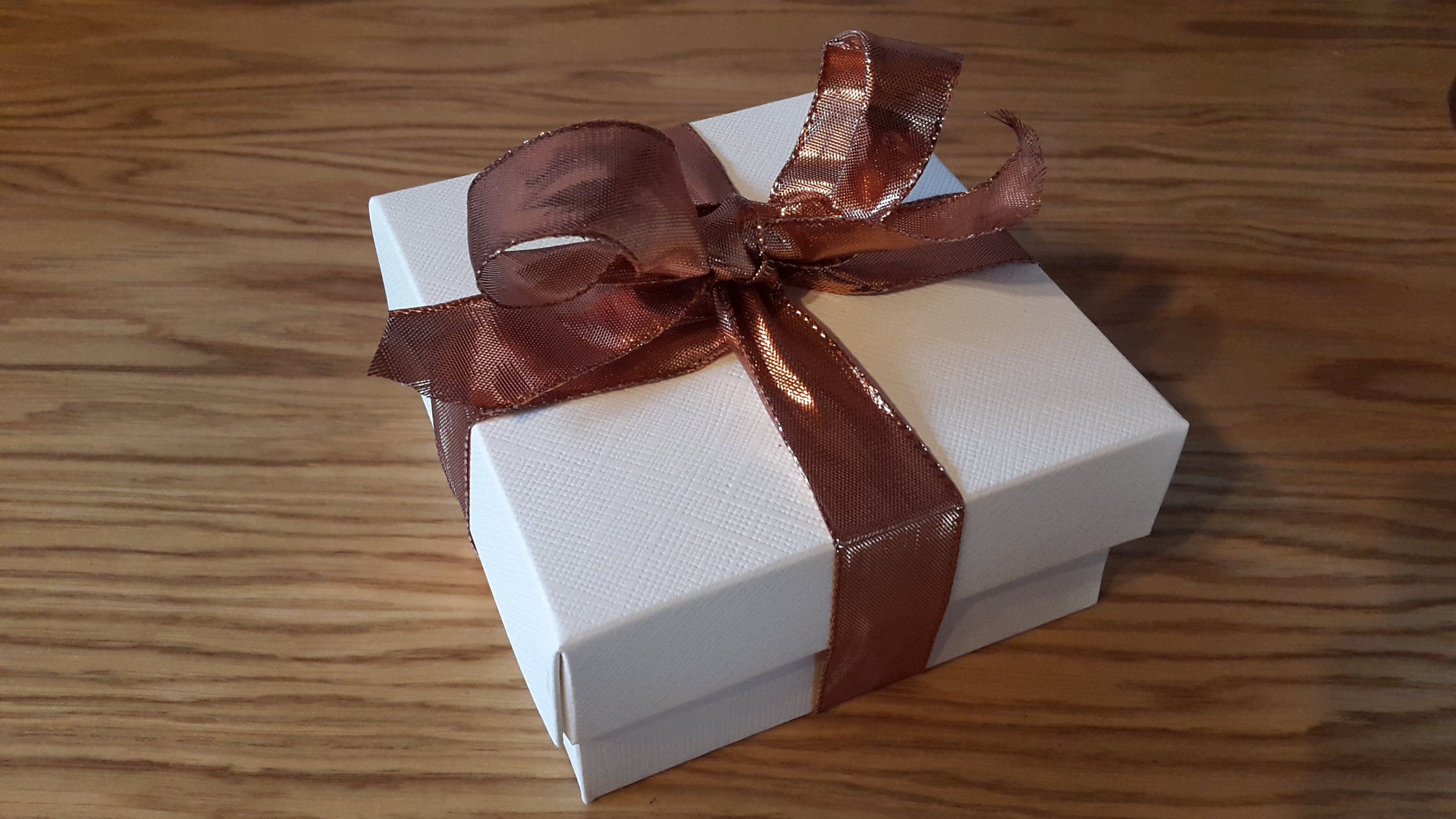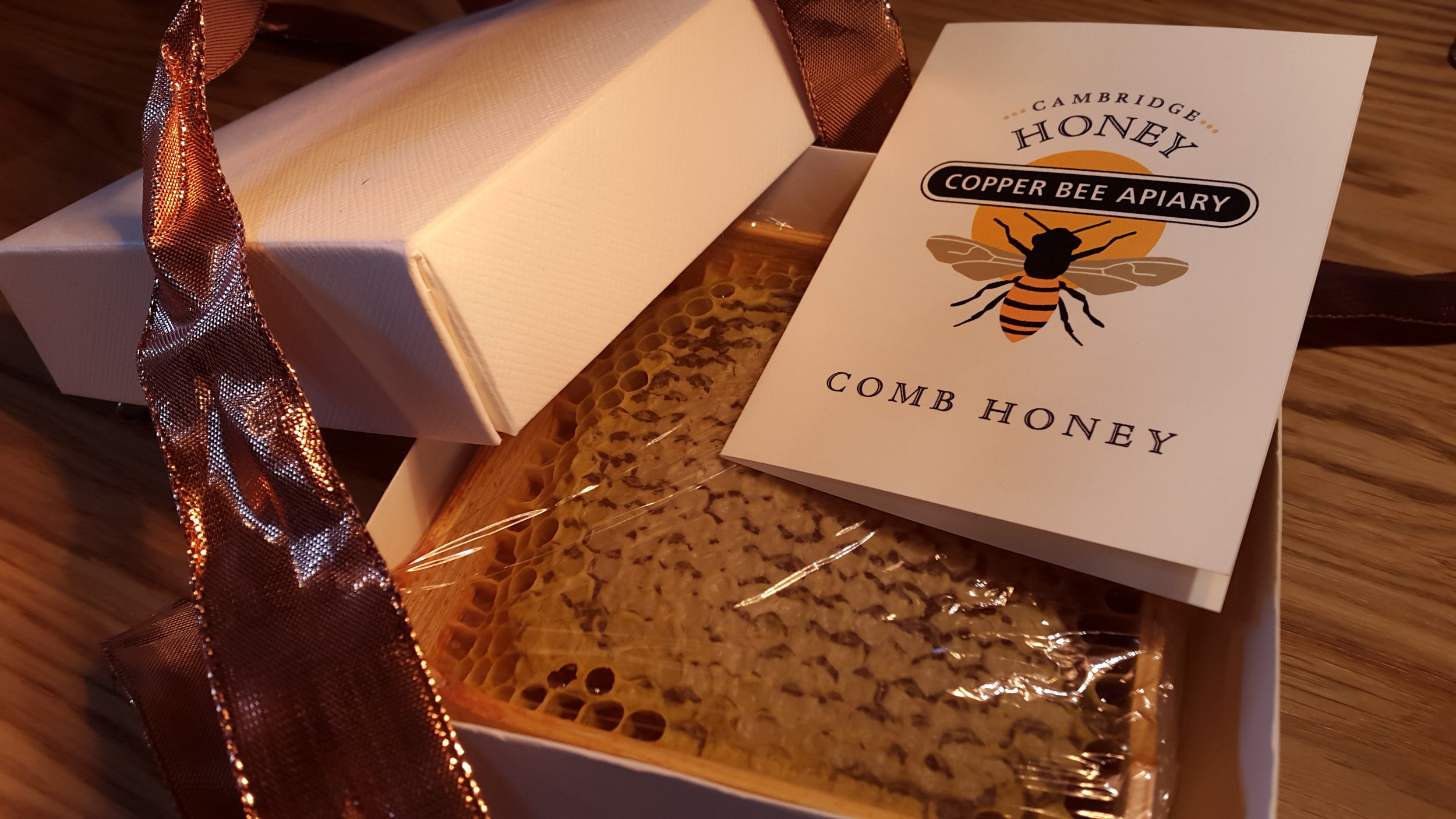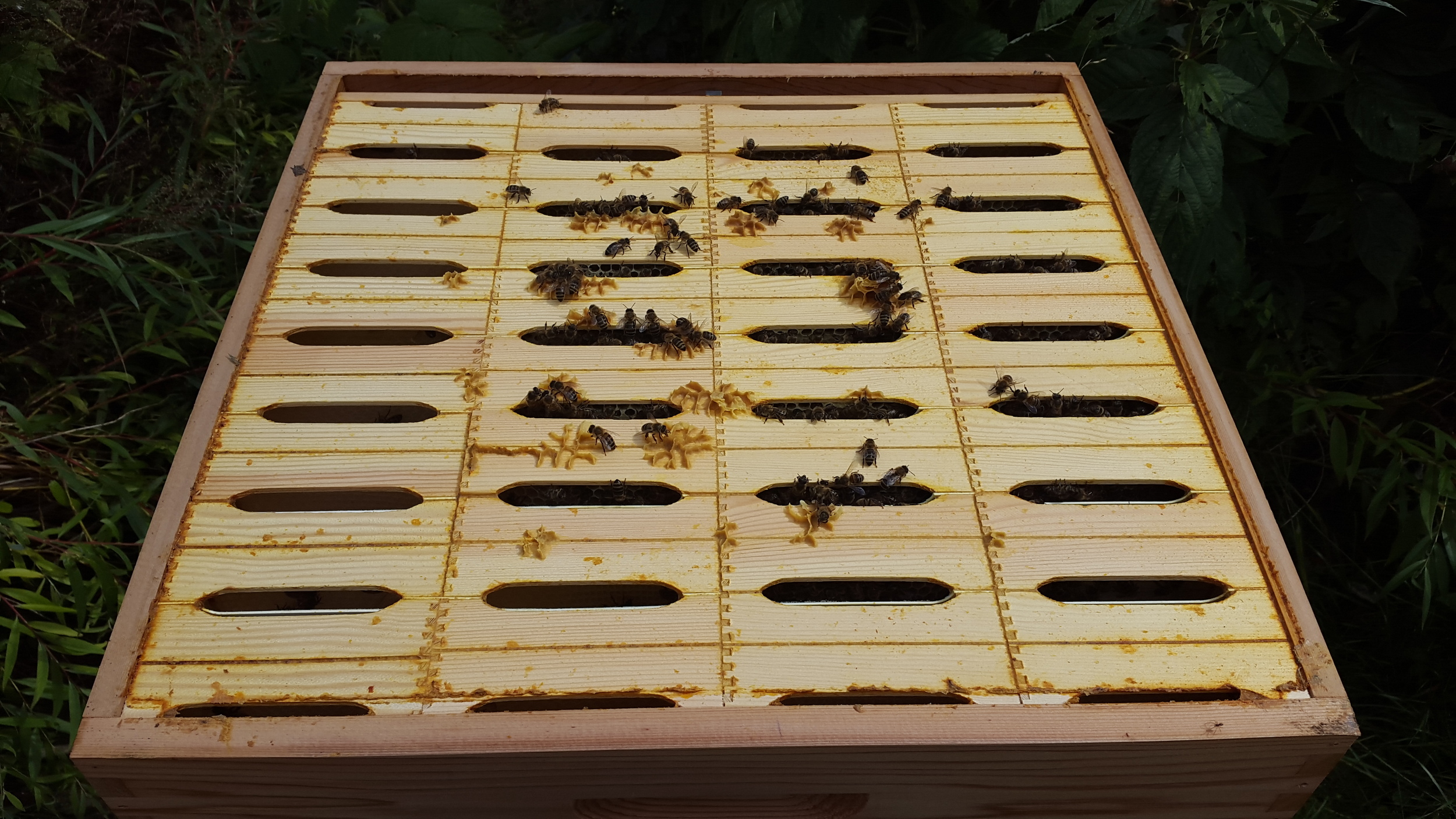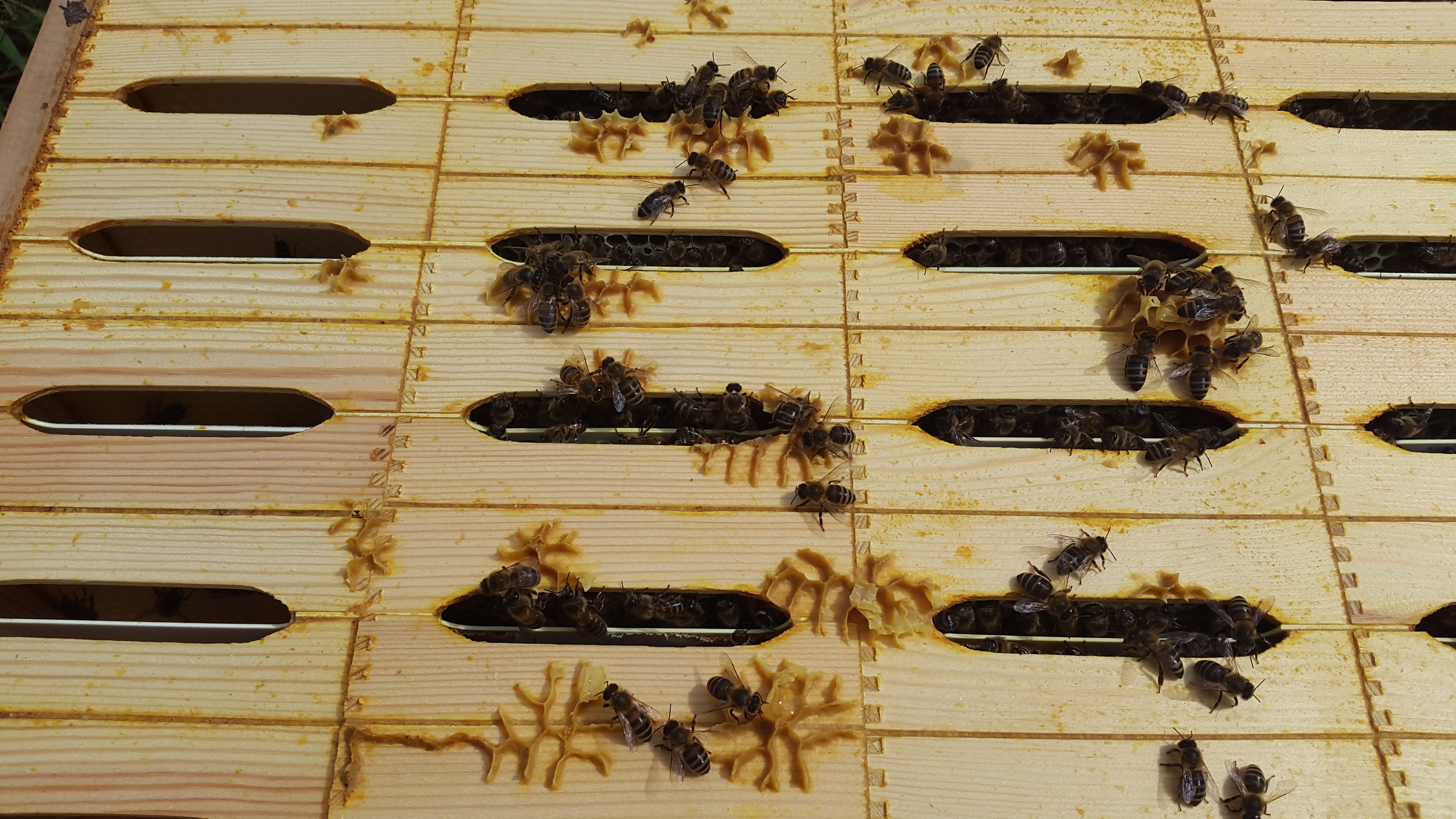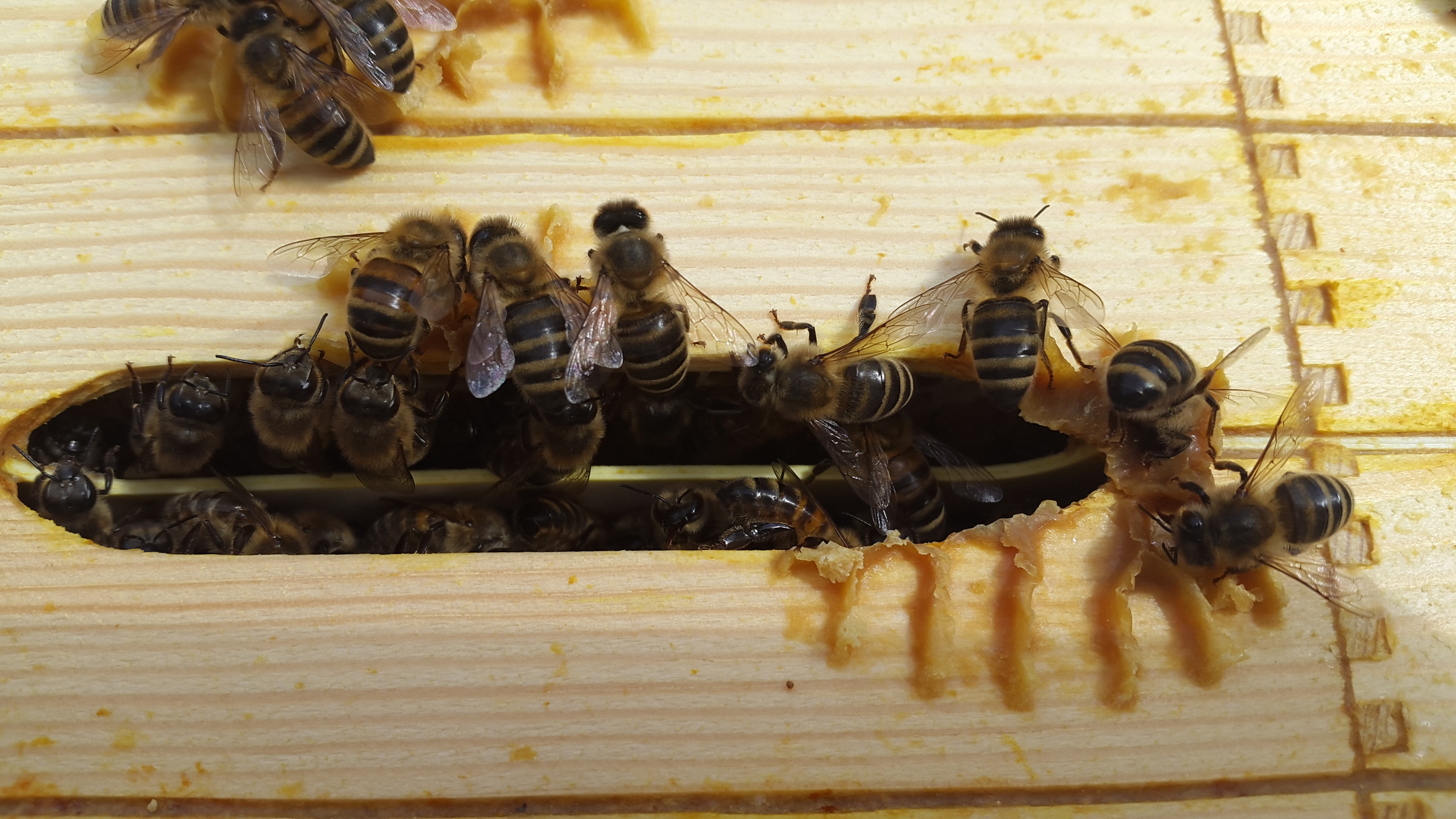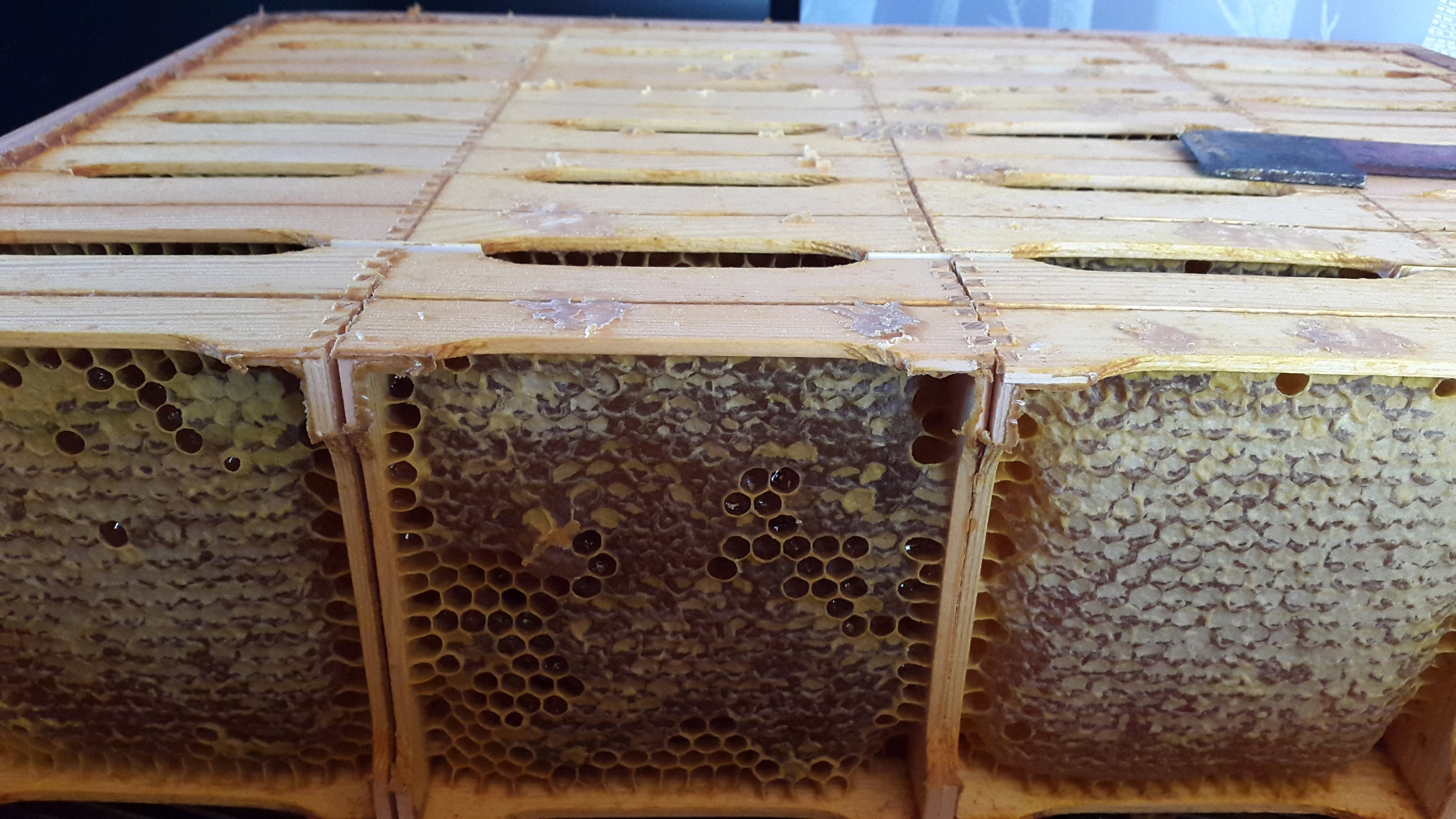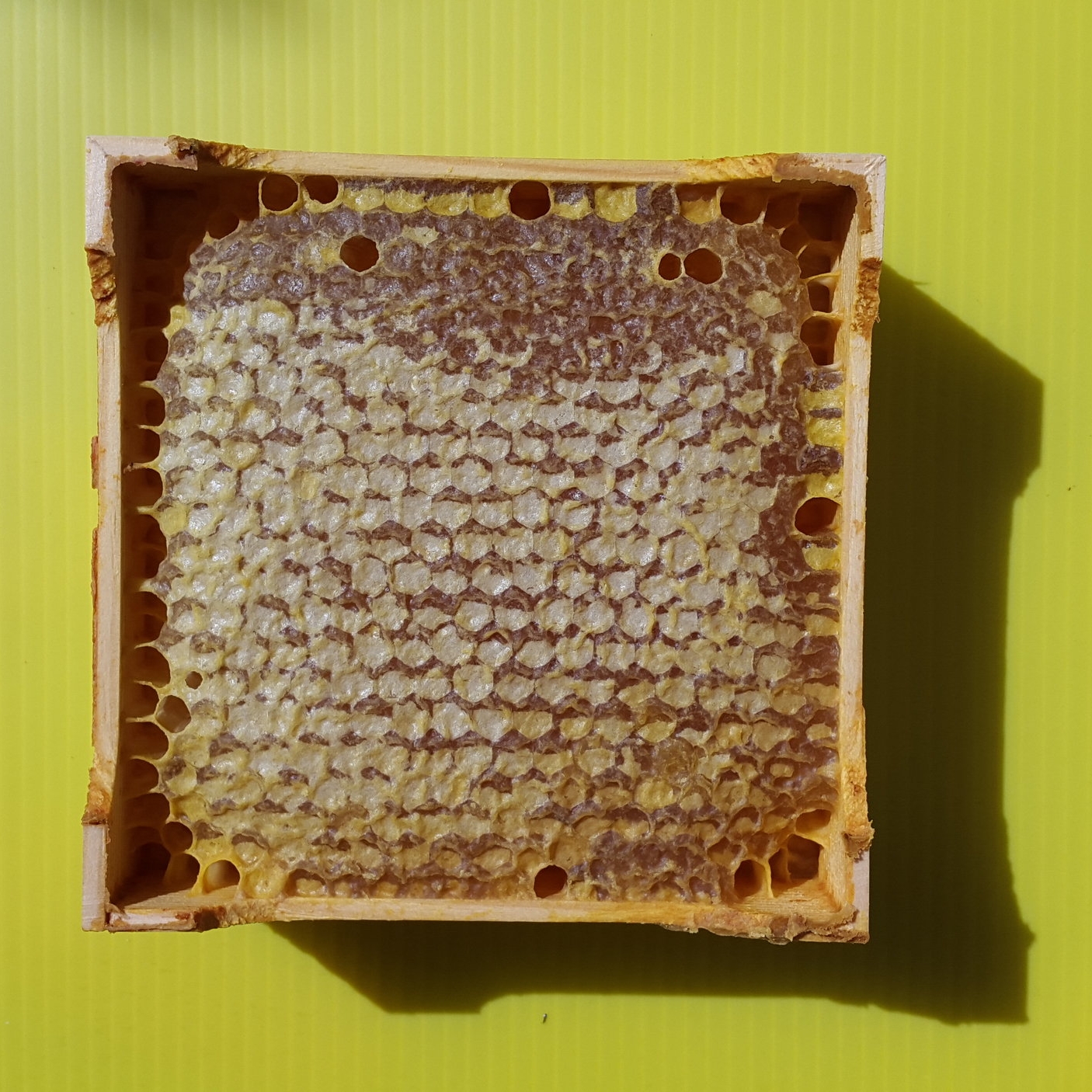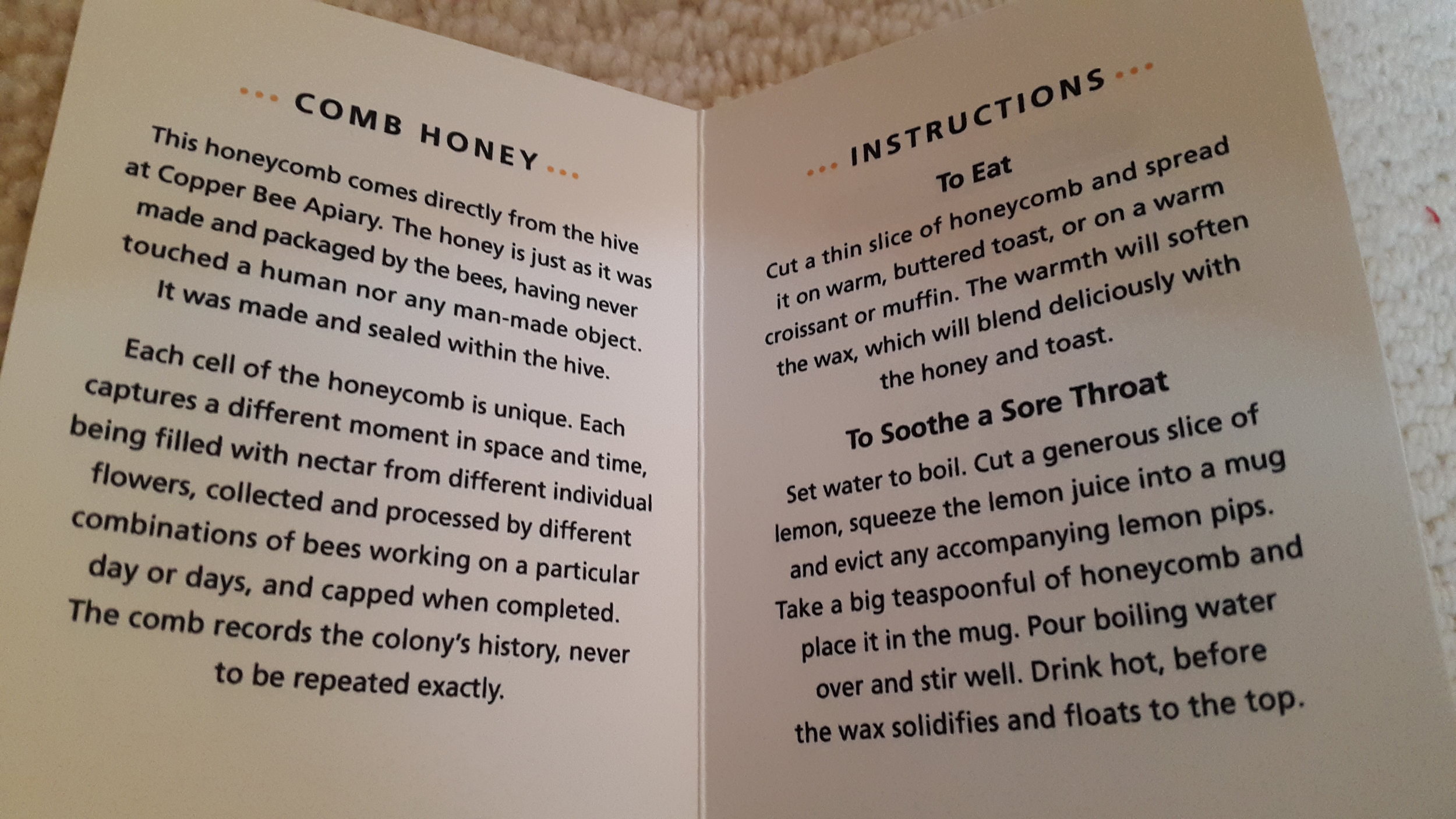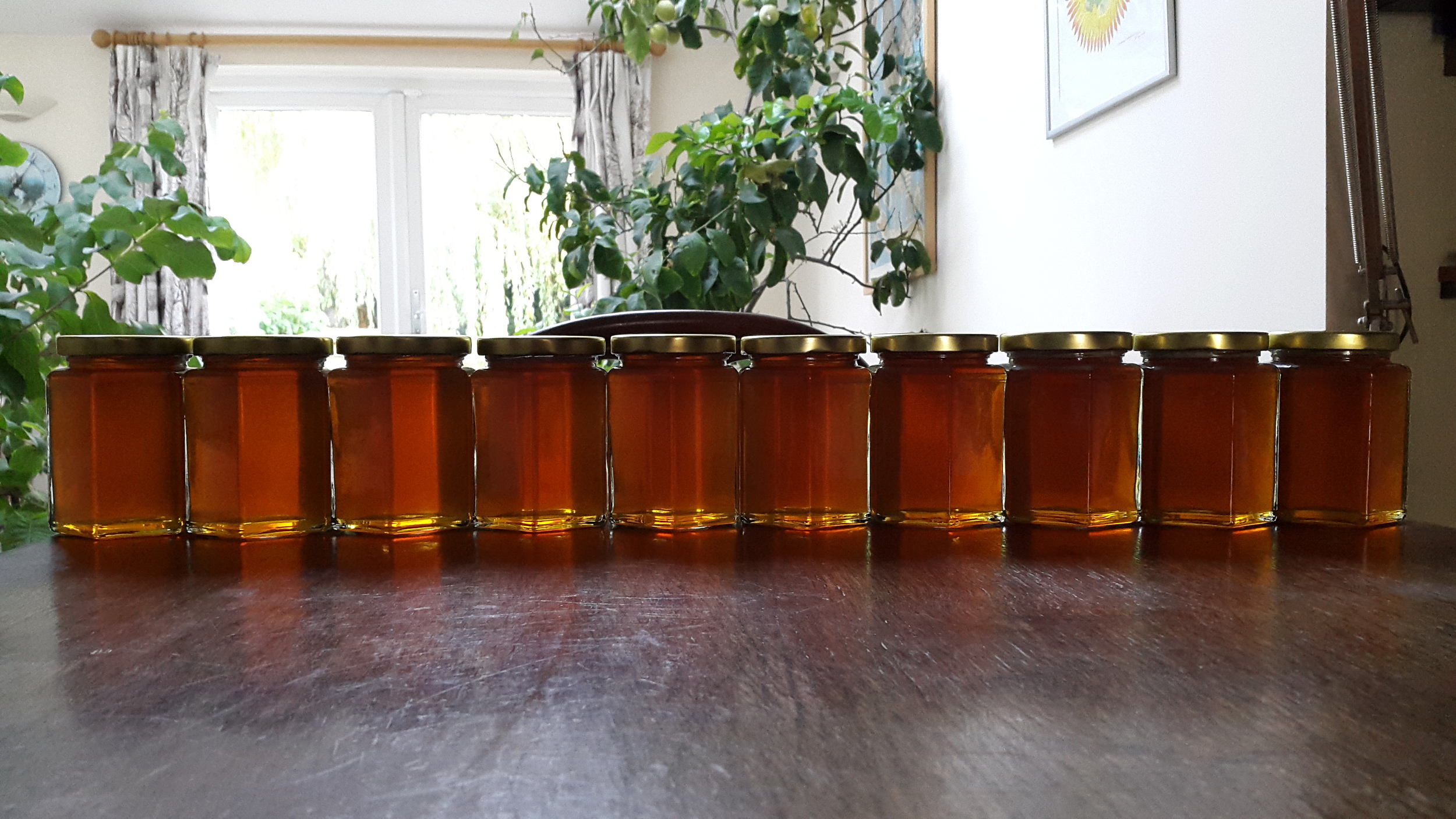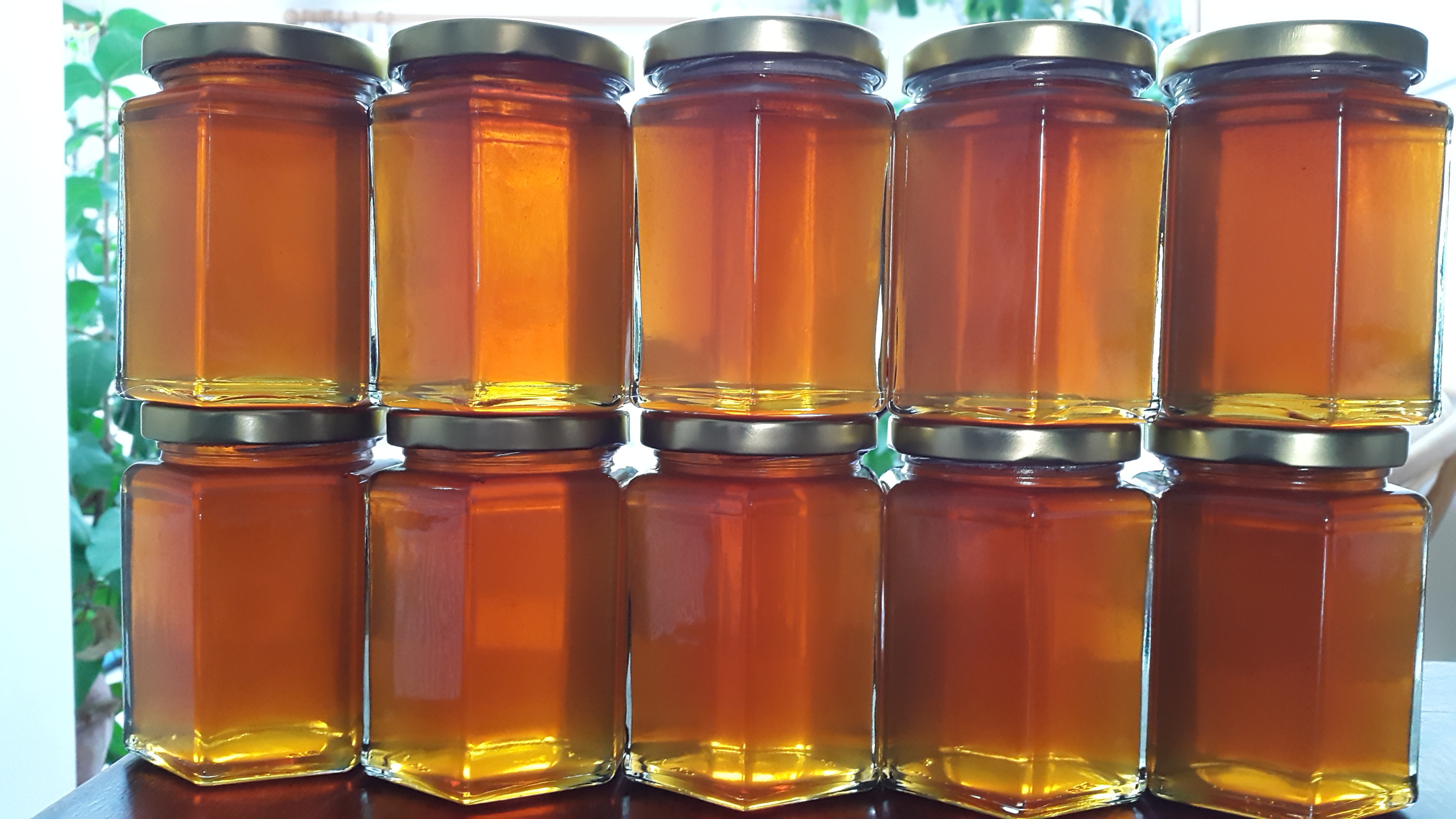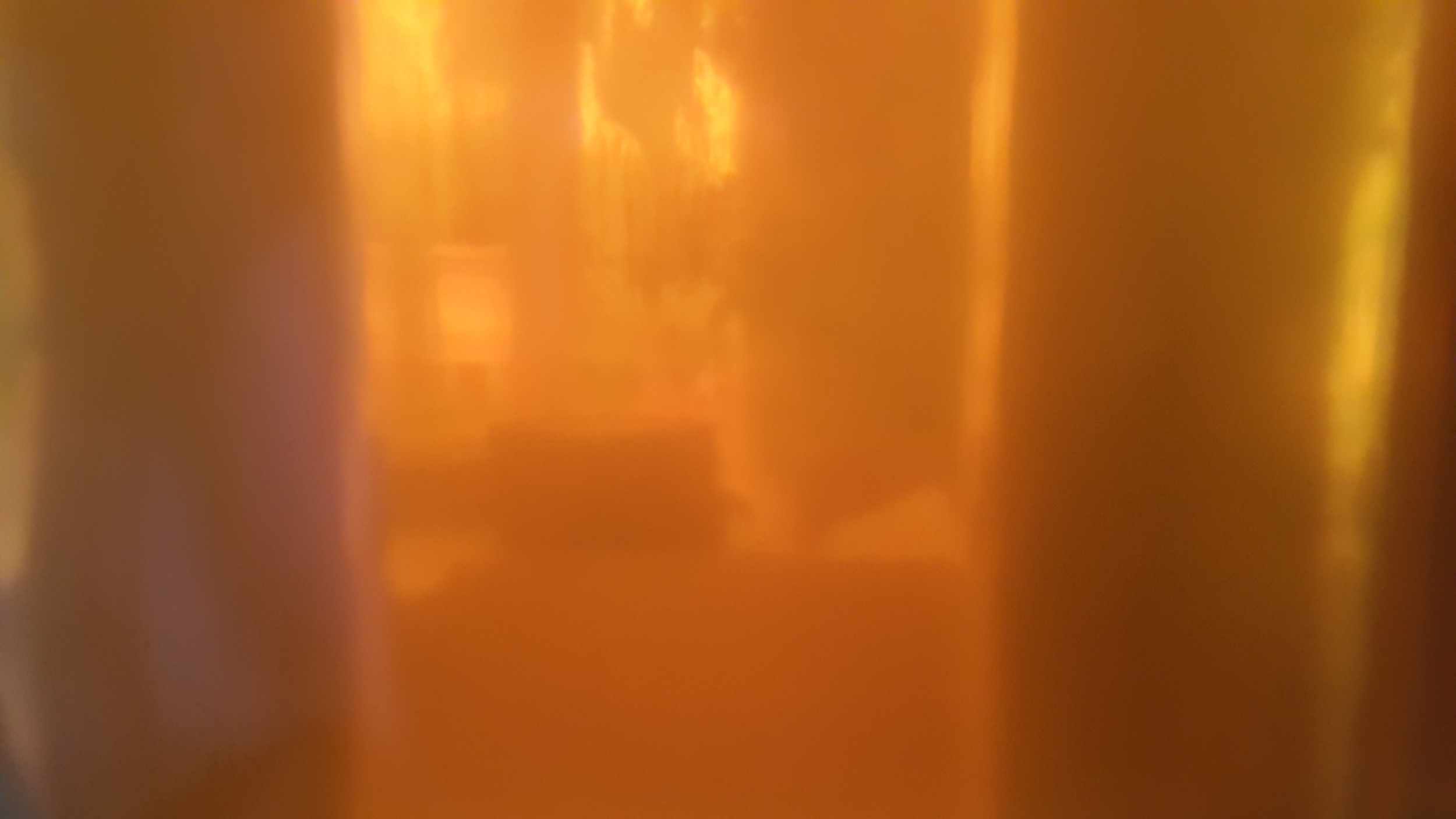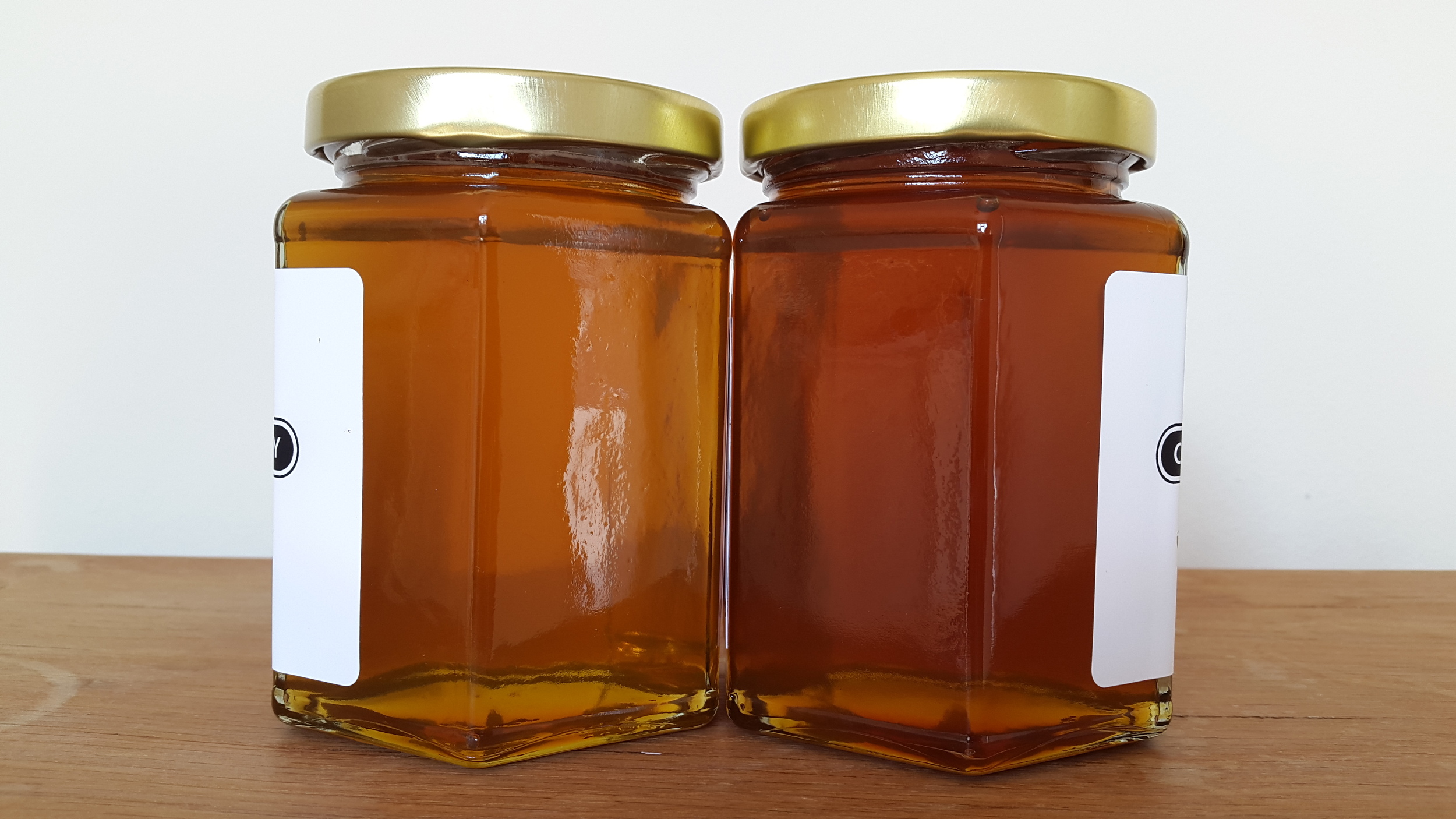A bright January day and the buzz is back.
Bees are active in all the hives, even Pond Hive which is always the last to get up in the morning.
The occasional nice bright day like this is good for letting the bees get out to stretch their wings on cleansing flights. They may even be planning for spring already. Although the spring nectar and pollen are many weeks off yet, perhaps the queens are starting to lay now in order to build up worker numbers in time for the harvest.
The beekeeper had better start preparing for spring too. I want to rub the outsides of the hives with linseed oil for weatherproofing, replace Pond Hive's landing board and swap Cedar Hive on to a stand with taller legs. All of which I'd prefer to do on a cold, gloomy day when the bees are huddled inside, rather than when they are zooming curiously about. I'm sure that chance will come...we have many more weeks of winter to go. But today is a reminder that spring is on the way.
This past summer, the bees in the Copper Hive worked on a new project: sections of comb honey.
Guess what people have got for Christmas!
I put the section rack on the hive in June. It has an array of individual boxes for the bees to build honeycomb in. Take off a full section rack and voilà, a set of neatly packaged comb honey sections, each in its own wooden box.
Although you can just cut up ordinary frames of honeycomb, or indeed press out squares of it using a bespoke device, I rather like the neatness and simplicity of having the bees build the comb directly in the individual wooden boxes. The outsides of the boxes get marked with beeswax and propolis, but that is the fate of all objects placed into beehives, reflecting the fact that honeycomb is made in the natural world not a sterile factory.
Also, wooden sections require precious little handling, so producing comb honey this way is neater and cleaner than manually slicing up the comb into blocks to fit in little plastic trays.
Further reading, eating and drinking
I melt honeycomb into a hot drink with lemon, and I hadn't given much thought to how to eat it. But then I read this question:
Most humble apologies for the following dumb question:
Are you supposed to eat the wax or spit it out? Do you swallow it? I assume if it is all mixed in with corn meal mush or oat meal, then you’re not going to be bothering much with separating the wax from the food in your mouth. But I don’t presume to know that, either.
I just filtered all the wax out of my comb honey and rendered it because it seemed like the “thing to do.” Next time, I’ll set at least a little aside for “eating” or whatever you are supposed to do with it in your mouth.
The person to whom this endearing question was asked is American Master Beekeeper, Rusty Burlew, who wrote about comb honey and how to eat it. Her recommendations in brief: spread it on hot, lightly buttered toast, chew it and swallow it. The wax will soften and blend deliciously with the honey and toast. Don't just eat the honeycomb directly because you'll end up with a lump of wax like chewing gum in your mouth. You can read Rusty's reminiscences and advice yourself on her website Honey Bee Suite. I've included her serving suggestion in the information leaflet that I include with each gift comb.
I hope you enjoy your honeycomb however you eat (or drink) it!
I sent a jar each of both this year's honeys to my Dad, perfumer Dr John King, and invited his opinions.
Read More
The Smith bees made this honey during the second half of July and the beginning of August. It's different from the earlier honey. Similarly runny, but darker, and with a rounded silky taste. Imagine olive oil and chocolate.
There were swathes of thistles flowering on Stourbridge Common at the time this honey was being made, so I think there must be a good proportion of thistle honey in here.
We extracted 4 frames, which filled 10 jars. The other frames were not fully capped, and have been returned to the bees.
There are a lot of confused bees flying around the gin terrace looking for their hive, which isn't where they left it.
The Smith beehive has served us well, but it has a design flaw - there is too much surface contact between some of the parts, which increases the risk of crushing bees between moving parts and prompts the bees to apply large amounts of propolis to seal the surfaces together. I'm taking the Smith Hive out of service, and will keep it in reserve as a spare.
So today I moved the Smith colony to the (previously empty) Cedar Hive, in an adjacent position. In fact it's not quite the full Cedar Hive yet, but the bottom of the Cedar Hive combined with the top of the Smith Hive, like this:
The idea is this:
- The brood, with the majority of house bees, some flying bees and hopefully the queen are now in the Cedar brood box;
- They have a part-filled super above them, which they can continue to fill with honey in preparation for Winter;
- Above that is the clearer board, which acts as a valve, allowing bees downwards but not upwards;
- Bees from the Smith Hive sections above the clearer board will move overnight into the Cedar hive sections below the clearer board;
- If Queen Eve was on the inside wall of the brood box when I removed the frames (lots of bees were), she will travel down overnight and end up in the Cedar super (ok this is not ideal, but better than losing her altogether);
- Most of the other bees from the Smith Hive that were on the walls will also move down through the clearer board overnight;
- Tomorrow the parts of the hive above the clearer board will have very few bees in, and I will take them off and replace them with the Cedar crownboard and Cedar roof. This includes a full super of honey, which can be taken for extraction.
Flying bees are oriented to the previous location of the Smith Hive, which isn't there any more. It's not far away, but nor is the Disc Hive:
I expect the flying bees to redistribute between the Cedar Hive and the Disc Hive. This will boost the numbers of the small colony in the Disc Hive...it may help that colony, at least I hope it will not harm them. One worker is Nasonov fanning (emitting a homing signal) at the entrance to the Cedar Hive, while there is no sign of this at the Disc Hive entrance...it may help the ex-Smith flying bees find their own colony.
Was the move a stingless operation? Not quite. In lifting the Smith brood box off its floor I trapped a bee between the inside of my knee and the outside wall of the brood box. Of course, she stung me.
I don't know yet whether this has been a successful move. I think it has, but there were probably mistakes I made. Hopefully I'll find out in due course what they were. I didn't see Queen Eve, though I didn't check every frame thoroughly, just looked over them briefly when transferring them across. More worrying is that I did not see eggs or young larvae either. I hope it is just a sign that the colony is shrinking rather than that the Queen is no longer in residence. It would be useful if they could fly a flag like Buckingham Palace does.
The Smith bees have produced a magnificent crop of honey.
Read More






